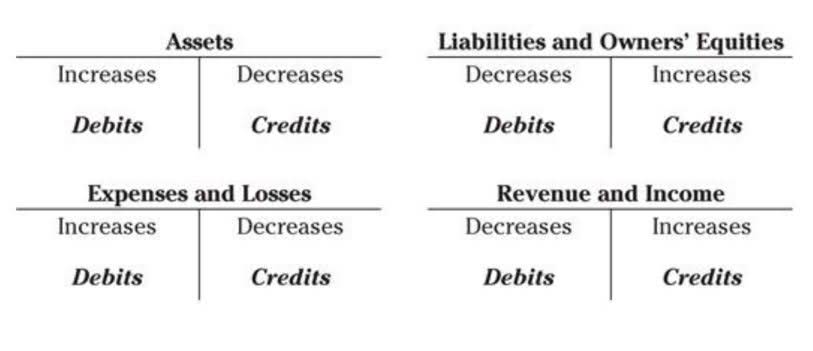Inventory and Cost of Goods Sold: In-Depth Explanation with Examples
Tips On How To Become A Consumer Experience Engineer
March 24, 2025The Evolution of Casino Gaming: From Traditional to Digital
March 24, 2025
Get started on your free Profit Frog trial and you’ll never have to think about Excel again. If you’re a Profit income summary Frog user, we’ll calculate your COGS percentage for you and help you spot key areas where you can minimize COGS and maximize profits. Now, let’s address some of the most frequently asked questions about cost of goods sold.
- In this type of inventory costing, the first items produced or purchased are sold first.
- It includes all stock, raw materials, work in progress and finished goods on hand.
- In this case, the company may need to re-evaluate its inventory management and cost accounting practices to ensure that its COGS is accurately reported.
- Now, that we have an understanding of debit and credit entry as well as COGS; is cost of goods sold a debit or credit?
- When the figure for the cost of goods sold goes beyond the income achieved by the business in the course of the reporting period, then the business is affording the loss in its activities.
Prime Costs Vs. Conversion Costs – What are the Key Difference?

Operational costs such as marketing, sales force expenses, and after-sales support are not included in COGS. These costs can be substantial and are vital for driving sales and supporting the product’s market position. By not including these costs, COGS overlooks essential aspects of the total cost of delivering a product to market. Cost tracking is essential in calculating the correct profit margin of an item.
Journal example of how to record the cost of goods sold
FIFO and specific identification track a single item from start to finish. Let’s get into the nitty-gritty of journal entries (hold your excitement). When you record COGS, you’re essentially moving costs from inventory (an asset on your balance sheet) to an expense on your income statement (when you sell the inventory). It’s like transferring funds from your savings to checking—only less fun. The income statement (also known as the profit and loss statement) is all about capturing revenue and expenses over a specific period.

Can you have COGS without sales?

Your cost of goods sold (COGS) may be higher due to the possibility of the rising cost of goods or materials. Profits need to be made and are determined by the amount of money people pay for your goods. You do not want to set a price that is lower than the cost of producing the product. By understanding COGS and the methods of determination, you can make informed decisions about your business.
Keeping COGS accurate
- Efficient inventory management can reduce holding costs and improve inventory turnover.
- IEnd (IE) is the cost of goods produced but not sold and therefore left in the inventory balance at the end of the period.
- Conversely, a lower COGS results in a higher gross profit and potentially higher taxable income.
- Under the FIFO cost flow assumption, the first (oldest) costs are the first costs to leave inventory and be reported as the cost of goods sold on the income statement.
- Cost of goods sold is likely the largest expense reported on the income statement.
- Recall that, there is $150,000 of overhead to allocate to the items produced during the month.
The difference is some service companies do not have any goods to sell, nor do they have inventory. There are other inventory costing factors that may influence your overall COGS. The IRS refers to these methods as “first in, first out” (FIFO), “last in, first out” (LIFO), and average cost. If you’re a manufacturer, you need to have an understanding of your cost of goods sold, and how to calculate it, in order to determine if your business is profitable.
Video Explanation of Cost of Goods Sold
But not all labor costs are recognized as COGS, which is why each company’s breakdown of their expenses and the process of revenue creation must be assessed. Getting your COGS right means understanding how to value your inventory correctly and knowing the accounting rules. Doing so isn’t just about avoiding trouble; it’s about earning trust. Accurate and transparent COGS reporting helps build a robust and trustworthy relationship with your business partners and supports your business’s growth over time.
- Strategic pricing requires a clear view of both direct and indirect costs.
- Artificial intelligence simplifies this process by automating cost tracking, identifying pricing anomalies, and forecasting future changes.
- You can determine net income by subtracting expenses (including COGS) from revenues.
- The reason why is because you are going by the older costs in a currently inflated market.
- These direct costs typically include the cost of raw materials, direct labor, and manufacturing overhead directly tied to production.
It helps you make smarter financial decisions and understand where you can improve upon. Changes in inventory levels on the Balance Sheet directly influence the COGS figure https://heizhaus-gebesee.de/wordpress/?p=1458 on the Income Statement. For instance, if ending inventory is lower than beginning inventory, more goods were sold than purchased or produced, leading to a higher COGS. Conversely, an increase in inventory indicates fewer goods were sold relative to what was available, resulting in a lower COGS. COGS include market-driven costs like lumber, metal, plastic, and other supplies that have a cost set by someone else and are, therefore, less under your control. This transformation highlights why COGS is not on the Balance Sheet.


Direct labor costs can include full-time and part-time employees, as well as temporary employees, if you hired them during a surge in production. If you had employees who worked overtime in your product’s production, those numbers also need to be reported here. Remember that labor costs for sales and administrative people are not reported here. COGS is a key metric that can be used to analyze a company’s what is cogs on a balance sheet financial performance. By analyzing COGS, you can gain insights into a company’s cost structure and profitability.
